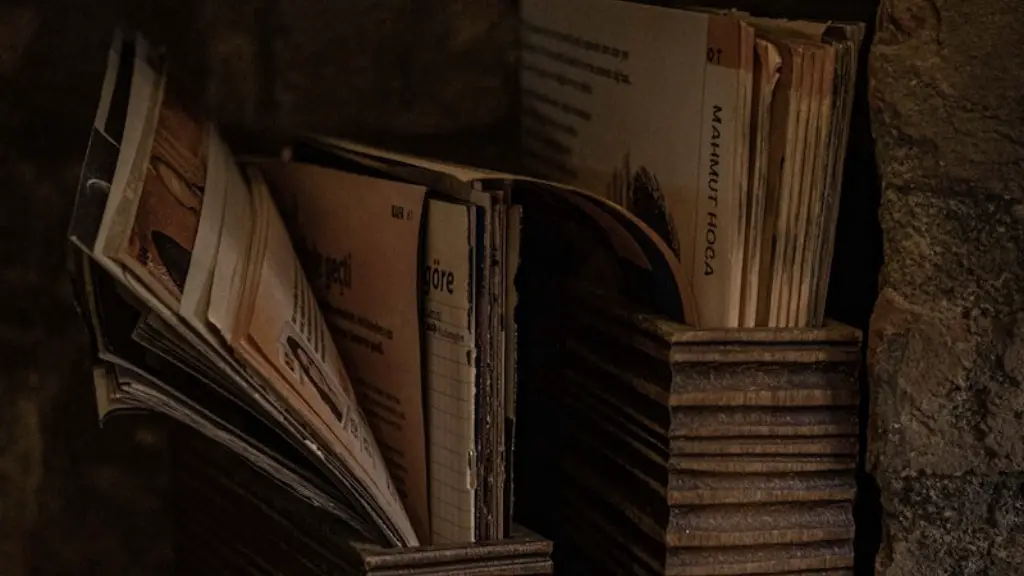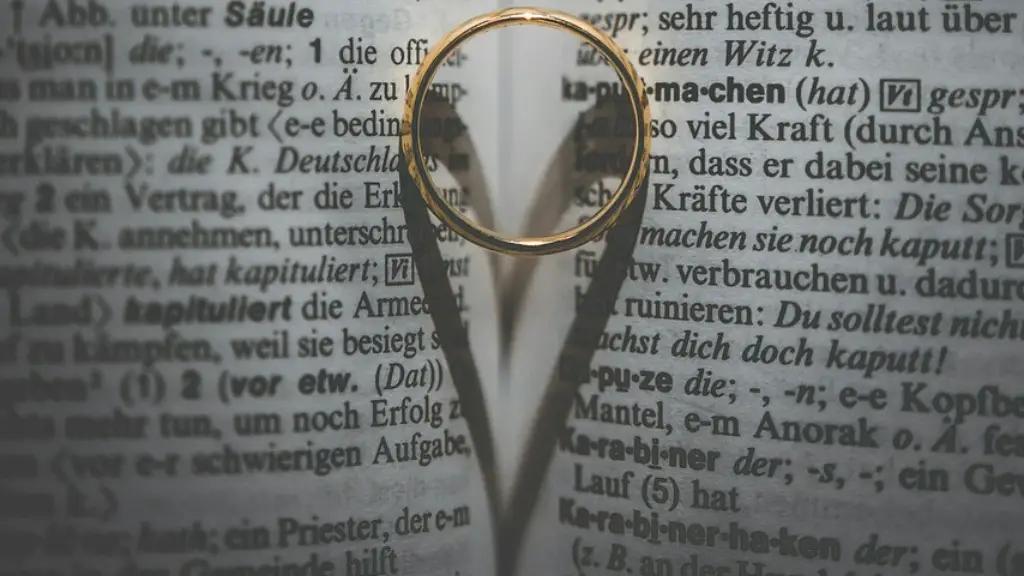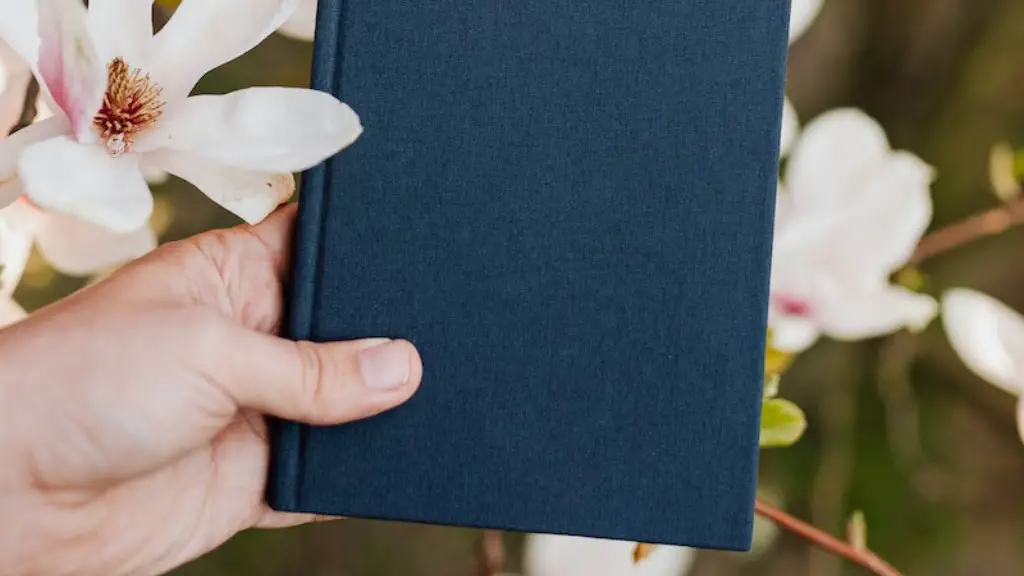Enjambment is a technique in poetry which refers to the transition of a thought or idea from one line or couplet to the next without any form of pause. It is a specific type of sentence structure, designed to both create flow and meaning within a piece of literature. The use of enjambment can create a sense of continuity and speed within a poem, allowing the flow of words and images to move uninterrupted. It is an efficient way to convey emotion and create vivid imagery, and is often employed to great effect in both classical and contemporary poetry.
Enjambment is often used to create a sense of surprise or tension in the poem, by leaving some sort of cliffhanger at the end of one line or couplet. By making the reader continue down the page or to the next line in order to understand the complete thought or feeling, the poet is able to shape the experience of reading the poem in a very specific way. This particular technique can lead to a sudden increase in intensity, as the readers are left hanging at the end of each line, eager to find out what happens next.
However, enjambment can also be used to create a sense of unity within a poem, by linking together seemingly unrelated ideas in an engaging way. By allowing a thought or image to continue from one line to the next, the poet can create a continuity of thought that keeps the reader hooked to the poem. The effect is often described as a ‘slow burn’, as the reader has to pay extra attention to the poem in order to understand the full message.
The use of enjambment is also closely linked to a concept known as ‘poetic compression’, which refers to the ability of a poet to condense large amounts of meaning into a few words. By using enjambment, the poet can make the most of the available space, packing in as much emotion and imagery as possible. This technique can also be used to give the poem a sense of motion and energy, as words and ideas seem to move quickly from one line to the next.
Enjambment is a powerful tool in the arsenal of any poet, and when used correctly can be a truly captivating experience for the reader. By using enjambment, the poet can control the pacing and intensity of the poem in a very specific way, allowing them to shape the narrative in a way that would not be possible without the use of this particular technique.
Examples Of Enjambment
Enjambment is a fairly common technique in poetry, and can be seen in many of the most well-known works by some of the most influential poets in history. John Milton’s ‘Paradise Lost’ features enjambment throughout, most notably in the well-known phrase ‘Better to reign in Hell, than serve in Heaven’. The use of enjambment here serves to add a sense of urgency and intensity to the phrase, heightening the emotion of the moment.
Modern-day poets also make extensive use of enjambment in their work. For example, Pulitzer Prize-winning poet T.S. Eliot’s poem ‘The Journey of the Magi’ is a prime example of how enjambment can be used to add layers of meaning to a piece of literature. The poem is full of imagery and emotion, and the use of enjambment helps convey the sense of unease and restlessness that the Magi feel on their journey.
Enjambment can also be used in shorter forms of poetry, such as haikus. By allowing the thought or image to continue from one line to another, the poet is able to maximize the available space and add additional layers of meaning to the poem. For example, the following haiku by poet Issa: ‘The old pond;/A frog jumps in—/The sound of water’ is a perfect example of how enjambment can be used to create a vivid imagery that captures the moment perfectly.
The Benefits Of Using Enjambment In Poetry
The use of enjambment in poetry can be incredibly beneficial for the reader, as it allows them to connect with the poem in a much more meaningful way. By making the reader’s journey through the poem more engaging, the poet is able to draw the reader in and create a sense of anticipation and excitement. Enjambment also allows the poet to reveal information slowly, heightening the emotion of the moment and creating a much more immersive reading experience.
Enjambment can also be used to create a sense of suspense and tension in the poem, by leaving some sort of cliffhanger at the end of a line or couplet. This helps to keep the reader engaged and invested in the poem, as they are left guessing what will happen next. The use of enjambment can also help to build up to a climax, allowing the reader to gradually work their way towards the poem’s conclusion.
Finally, enjambment can help to create a sense of unity within the poem. By allowing certain thoughts or images to flow from one line to another, the poet can create a continuity of thought which helps to keep the poem cohesive and engaging. This technique allows the poet to create a narrative thread in the poem which links the different parts of the poem together, creating a more unified reading experience.
Conclusion
Enjambment is an incredibly powerful tool in the hands of a skilled poet, and can be used to create vivid imagery and emotional depth in their work. By combining the use of enjambment with poetic compression, the poet can create a truly captivating experience for the reader. By allowing the words and images to flow freely from one line to another, the poet can create a sense of urgency, suspense and unity within the poem.
The use of enjambment can help to engage the reader, allowing them to connect with the poem in a more meaningful way. By using enjambment, the poet is able to shape the pace and intensity of the poem in a specific way, allowing them to create a much more immersive experience for the reader. Enjambment is a powerful tool in any poet’s arsenal, and when used correctly can greatly enhance the experience of reading a poem.
History of Enjambment
The use of enjambment in poetry has a long and storied history, reaching back to the works of some well-known poets from centuries ago. Ancient Greek poet Homer is believed to have used enjambment in his epic poem ‘The Iliad’, and it is also found in the works of many Renaissance poets such as William Shakespeare, John Milton and John Donne.
The use of enjambment in poetry gained increasing popularity throughout the 18th and 19th centuries, as poets began to experiment with different ways of conveying their words and ideas. It was during this time that poets such as Emily Dickinson, Walt Whitman and Robert Frost began to employ enjambment in their works, creating some of the most well-known and beloved poems of all time.
Enjambment continues to be one of the most popular techniques used by poets today, and there are many examples to be found in contemporary works as well. Some modern-day poets who employ enjambment in their works include Naomi Shihab Nye, Billy Collins, Michael Dickman and Kevin Young.
Enjambment in Modern Culture
The use of enjambment in poetry has become increasingly popular throughout the 20th and 21st centuries, and can now be found in many different forms of media. Musicians often use enjambment to create a sense of continuity and momentum in their lyrics, and film directors rely on enjambment to create suspense in their films. Even politicians have incorporated enjambment into their speeches, making use of the technique to engage their audience and convey their message in an effective way.
Enjambment has also become increasingly popular among poets and spoken word artists, who often use the technique to create a sense of urgency and suspense in their work. The use of enjambment has also become a popular form of storytelling, as it allows the storyteller to create an engaging narrative that keeps their audience hooked until the very end.
Finally, enjambment in poetry can be used to great effect when conveying a particular message or emotion. By allowing certain thoughts or ideas to flow from one line to another, the poet can create a sense of continuity and unity within the poem, allowing them to craft a narrative that resonates with the reader in a very powerful way.




